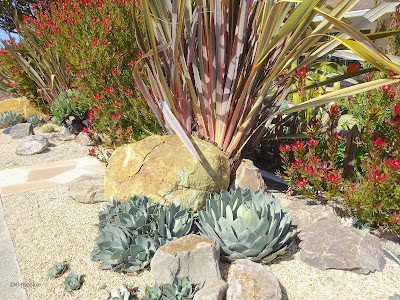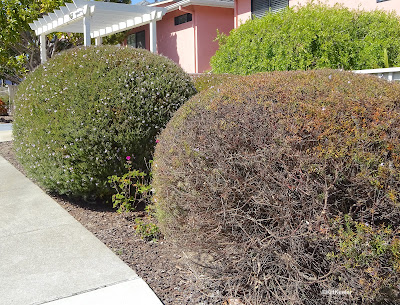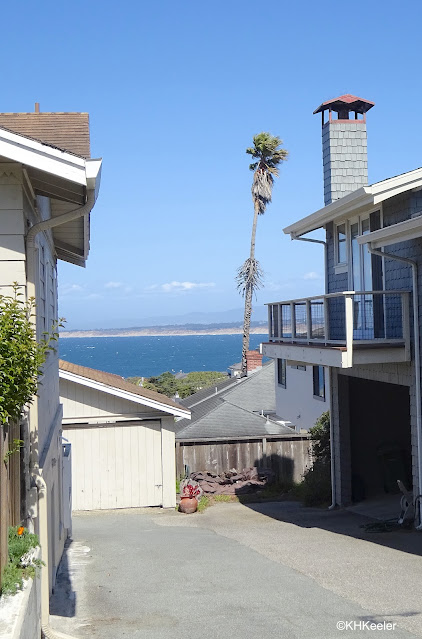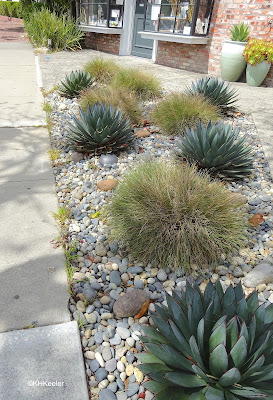I was in Monterey, California this week. I walked residential streets oogling the plants. Exotic plants with huge cascades of flowers, from places like Australia and South Africa. In full flower in April. And then I realized what I wasn't seeing: grass lawns.
 |
| Pride of Madeira, Echium candicans |
 |
| Ornamental grasses, Monterey |
 |
| Yard with succulents |
California has been in an historic drought since at least 2015, and it does not seem to be over (link). Keeping a lawn green is among the most water-intensive uses of space. Monterey County has had a series of initiatives to reduce water use, including rebates for replacing lawns (link). Of course I was seeing the result of all this effort.
Look at some of what I saw:
When I realized I wasn't seeing grass lawns, I went looking for them. I had to look in a dozen yards to find these, but here are a couple:
 |
| Small grass lawn, Monterey, CA |
Another bit of lawn:
 |
| Yard with a patch of grass lawn, Monterey, CA |
But these looks were much more common:
 |
| Front yard without grass, Monterey, CA |
 |
| Front yard without grass, Monterey, CA |
Not only water-conserving, perennials in the yard need less maintenance than grass. They certainly don't have to mowed regularly. Of course, if you need to fuss over the plants in your yard, you can always trim something into a fancy shape, so that whenever it grows a little, you need to trim it again:
 |
|
There were also some unusual plants. This street divider is filled with ornamental sedges (family Cyperaceae), like ornamental grasses, but different:

Since I have been blogging about using natives in the past couple weeks, I have to note that many of these plants are aliens. Coastal California supports southern European, Australian, and South African plants that my climate would kill, some of them very handsome. The residents of Monterey have clearly made major progress reducing the amount of water people pour on their yards just so the grass looks nice. But to many of their native California insects and birds, these yards are empty, with nothing to eat. So, in our humans-first sequence, they've cut down water use, pushing back the point when water runs out. Truly, that is on the horizon across the U.S. West, where rainfall comes nowhere near replacing the water people are accoustomed to using. Still needed is to supplement or replace exotics with natives, so that residences and city plantings support the plants that feed the insects that pollinate our flowers and trees and the caterpillars nesting songbirds eat. Learning to live in balance with our environment is a complex, overdue project which we have hardly started on. Wise water use is a very positive step.
Beautiful place, beautiful plants, Monterey, California.
 |
Bay views from residential streets,
Monterey, California |
Comments and corrections welcome.














Some of the ornamental grasses in that pic up there seem to be Nassella (or Stipa) tenuissima, an invasive in that area. Beautiful grass though.
ReplyDeletevery well describes about yarn dyed beach towels in article
ReplyDeleteHello How often do the purple bloom bushes need to be watered in the summer in Monterey?
ReplyDeleteThe level of interest in plants, and plantsmanship, among the general population of northern coastal California is conspicuously high, say, compared to Australians. The range of exotic plants that can thrive in that climate is very wide, so it's hard to turn your back on stuff like the Proteaceae and South African Asteraceae and only grow natives.
ReplyDelete